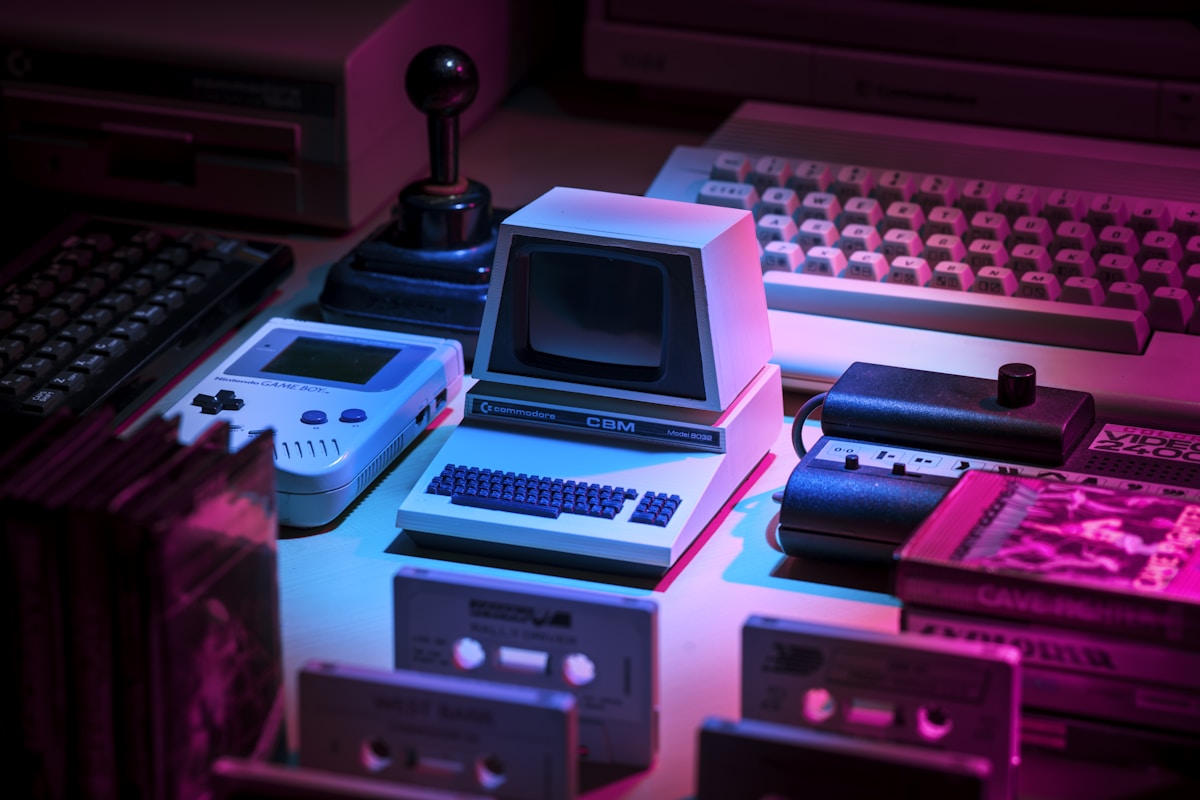A YouTube content creator uploaded gameplay of the original 1996 PC-98 version of Corpse Party, the indie RPG Maker horror game that launched nearly three decades ago on NEC PC-9801 hardware before eventually becoming a cult classic franchise. The video titled The PC-98 original which became a cult hit decades later! showcases the primitive 16-bit visuals and gameplay mechanics of creator Makoto Kedōin’s original creation, which was developed using RPG Tsukūru Dante 98 (an early Japanese version of RPG Maker) for a game development contest. The original release remained obscure for over a decade before multiple remakes introduced Western audiences to what would become a beloved horror series.
The Original 1996 Release
Corpse Party launched April 22, 1996 for the NEC PC-9801, a Japanese personal computer platform popular in the 1980s and early 1990s. Creator Makoto Kedōin developed the game using RPG Tsukūru Dante 98, entering it into a contest for games made with that early RPG Maker tool. The PC-98 version featured basic 16-bit graphics, simple sound design, and turn-based adventure gameplay where players explored the haunted Heavenly Host Elementary School while avoiding death from vengeful spirits.
The game told the story of high school student Ayumi Shinozaki and her friends who perform a friendship ritual after their cultural festival. The ritual goes horribly wrong, transporting them to an alternate reality version of Heavenly Host Elementary, a tragedy-stricken school that stood on the site of their own school decades earlier. Trapped by vengeful child spirits, the students must uncover the chilling murders of those who came before while avoiding gruesome deaths through careful exploration and choice-making.
The Decade-Long Journey to Recognition
Despite launching in 1996, Corpse Party remained virtually unknown outside hardcore Japanese indie game circles for over ten years. The PC-98 platform’s decline in the late 1990s as Windows PCs dominated meant the game became increasingly inaccessible even to Japanese players. Without an English translation or Western release, international audiences had zero awareness the game existed. Corpse Party could have remained a forgotten curiosity from the early RPG Maker scene if not for persistent fan interest and eventual remake projects.
The first remake attempt came in 2006 when Corpse Party: NewChapter launched for Japanese mobile phones (keitai). This version remained incomplete, releasing from October 2006 to December 2007 before being cancelled before its fifth chapter. Despite the incomplete release, NewChapter demonstrated renewed interest in reviving the obscure PC-98 title for modern audiences. That mobile experiment laid groundwork for the more successful remakes that followed.
The Blood Covered Remake That Changed Everything
Corpse Party: Blood Covered launched for Microsoft Windows from March 2008 to July 2011, completely rebuilding the original game with enhanced graphics, expanded story content, and professional production values. This version caught attention from mainstream Japanese gaming audiences, transforming Corpse Party from forgotten indie curiosity into legitimate cult horror phenomenon. Blood Covered’s success prompted Team GrisGris to develop the definitive version.
Corpse Party: Blood Covered …Repeated Fear for PlayStation Portable released August 12, 2010 in Japan, adding full Japanese voice acting, additional chapters, and refined gameplay mechanics. This PSP version became the breakthrough that brought Corpse Party to international audiences when XSEED Games localized it for North American and European release. The PSP’s popularity among RPG and visual novel fans in the West created the perfect platform for introducing horror enthusiasts to the franchise.
How Corpse Party Grew Into a Franchise
The PSP remake’s Western success spawned an entire multimedia franchise. Corpse Party: Book of Shadows released as an anthology combining sequel, prequel, midquel, and alternate universe stories. Corpse Party: Blood Drive concluded the original storyline trilogy. The series expanded to include manga adaptations, anime OVA episodes, drama CDs, light novels, and even a live-action film. What started as a contest entry made by one person with RPG Maker grew into a multi-million dollar IP with dedicated fanbase worldwide.
XSEED Games and Marvelous Europe continued supporting the franchise through multiple platform releases. Corpse Party (2021), the most recent remake, launched October 20, 2021 for Nintendo Switch, PlayStation 4, Xbox Series X/S, Xbox One, and PC. This version added 16 Extra Chapters including two brand-new episodes with new characters Miku Shirayume and Ryoka Iwami. The remake featured fully voiced Japanese audio for the first time in Western releases, plus binaural 3D audio recording creating simulated surround sound through headphones.
The Corpse Party Tetralogy Pack
XSEED Games announced in August 2025 that the Corpse Party Tetralogy Pack will release for Nintendo Switch in the Americas and Europe in 2025. The collection bundles Corpse Party, Corpse Party: Book of Shadows, Corpse Party: Sweet Sachiko’s Hysteric Birthday Bash, and Corpse Party: Blood Drive into a single package. This represents the first time the complete original trilogy plus the comedy spin-off are available together on modern consoles outside Japan, where the collection launched August 7, 2025.
The announcement coincided with news that Corpse Party II: Darkness Distortion, the long-awaited sequel, was delayed from 2025 to 2026 for quality improvements. The game is now also receiving a PlayStation 5 version alongside previously announced Switch, PS4, and PC releases. The delay disappointed fans who’ve waited years for a proper continuation of the series’ storyline, though XSEED emphasized the extra development time will improve overall quality.
Why the PC-98 Original Matters
Watching gameplay of the 1996 PC-98 original provides fascinating context for understanding how dramatically Corpse Party evolved across remakes. The primitive graphics force players to rely heavily on written descriptions and sound design rather than visual horror, making imagination fill gaps that modern remakes render explicitly. The simple RPG Maker-based gameplay mechanics demonstrate how effective minimalist design can be when paired with strong writing and atmosphere.
The PC-98 version’s obscurity for over a decade also illustrates how gaming preservation and accessibility determine which titles survive versus disappear. Without fan dedication keeping the game alive through word-of-mouth and eventual remake projects, Corpse Party would have remained trapped on obsolete PC-98 hardware that almost nobody can run today. Tools like Infinite Mac that emulate classic systems allow curious players to experience these historical artifacts, though most fans encounter Corpse Party through modern remakes rather than the original.
The RPG Maker Legacy
Corpse Party represents one of RPG Maker’s most successful commercial success stories. The tool was designed for hobbyists creating small indie games, not launching multimedia franchises generating millions in revenue. Makoto Kedōin’s contest entry proved that compelling horror storytelling, creative use of limited tools, and dedication to atmosphere could overcome technical limitations. Corpse Party inspired countless other RPG Maker horror creators who saw that commercial success was possible with the accessible development tool.
Other notable RPG Maker horror successes followed Corpse Party’s blueprint. Mad Father, The Witch’s House, Ib, and Ao Oni all achieved cult followings by maximizing atmospheric horror within RPG Maker’s constraints. These games demonstrated that pixel art aesthetics and simple mechanics don’t prevent genuine scares when writing, sound design, and pacing work together effectively. Corpse Party’s journey from obscure 1996 PC-98 release to modern franchise validates the RPG Maker approach for aspiring horror developers worldwide.
Playing the Original Today
The original PC-98 version remains difficult to access legally. Emulation allows technically-inclined fans to run PC-98 games through tools like Neko Project II or Infinite Mac, but acquiring the original game files exists in legal gray areas. XSEED Games’ focus on remaking and re-releasing updated versions rather than preserving the original PC-98 release means official channels don’t provide legitimate ways to experience Corpse Party in its initial 1996 form.
Most fans are better served playing modern remakes anyway. The 2021 version on Steam, Switch, PlayStation, and Xbox represents the definitive Corpse Party experience with decades of refinements, expanded content, professional voice acting, and quality-of-life improvements. The PC-98 original holds historical interest for franchise completionists and retro gaming enthusiasts, but the story, scares, and gameplay work better in versions that benefit from nearly 30 years of iteration and polish.
Frequently Asked Questions
When did the original Corpse Party release?
The original Corpse Party launched April 22, 1996 for the NEC PC-9801 computer. Creator Makoto Kedōin developed it using RPG Tsukūru Dante 98 (an early RPG Maker version) for a game development contest.
Why did Corpse Party take so long to become popular?
The PC-98 platform’s decline in the late 1990s made the game increasingly inaccessible. It remained virtually unknown for over a decade until the 2008-2010 Blood Covered remakes for Windows and PSP introduced it to wider Japanese audiences, eventually reaching Western players through XSEED Games localization.
Can I play the original PC-98 version?
The original requires PC-98 emulation through tools like Neko Project II or Infinite Mac. However, acquiring the original game files exists in legal gray areas. Modern remakes are more accessible and represent superior versions of the game.
What is the best version of Corpse Party to play?
Corpse Party (2021) released October 20, 2021 for PC, Switch, PlayStation 4/5, and Xbox represents the definitive version with 16 Extra Chapters, full Japanese voice acting, binaural 3D audio, and decades of refinements over the 1996 original.
Is the Corpse Party Tetralogy Pack coming to the West?
Yes, XSEED Games announced the Corpse Party Tetralogy Pack containing all four main games will release for Nintendo Switch in the Americas and Europe in 2025. The collection launched in Japan on August 7, 2025.
When does Corpse Party II release?
Corpse Party II: Darkness Distortion was delayed from 2025 to 2026 for quality improvements. The game will release for Nintendo Switch, PlayStation 4, PlayStation 5, and PC via Steam when development completes.
Was Corpse Party made with RPG Maker?
Yes, the original 1996 version used RPG Tsukūru Dante 98, an early Japanese version of RPG Maker for the NEC PC-9801. Corpse Party became one of RPG Maker’s most successful commercial titles, inspiring numerous other horror games made with the tool.
Conclusion
The YouTube playthrough of Corpse Party’s original 1996 PC-98 version provides fascinating historical context for understanding how a forgotten indie RPG Maker contest entry eventually became a beloved horror franchise spanning multiple platforms, remakes, sequels, and multimedia adaptations. The primitive graphics and simple mechanics of Makoto Kedōin’s original creation demonstrate that compelling horror storytelling transcends technical limitations when atmosphere, writing, and sound design work together effectively. While the PC-98 version remains largely inaccessible outside emulation, modern remakes like Corpse Party (2021) and the upcoming Tetralogy Pack ensure new generations can experience the franchise’s evolution from obscure 1996 curiosity to cult classic phenomenon. The journey from PC-98 obscurity to international recognition represents one of gaming’s most improbable success stories, validating that great ideas can find audiences even when separated by decades and technological obsolescence.



